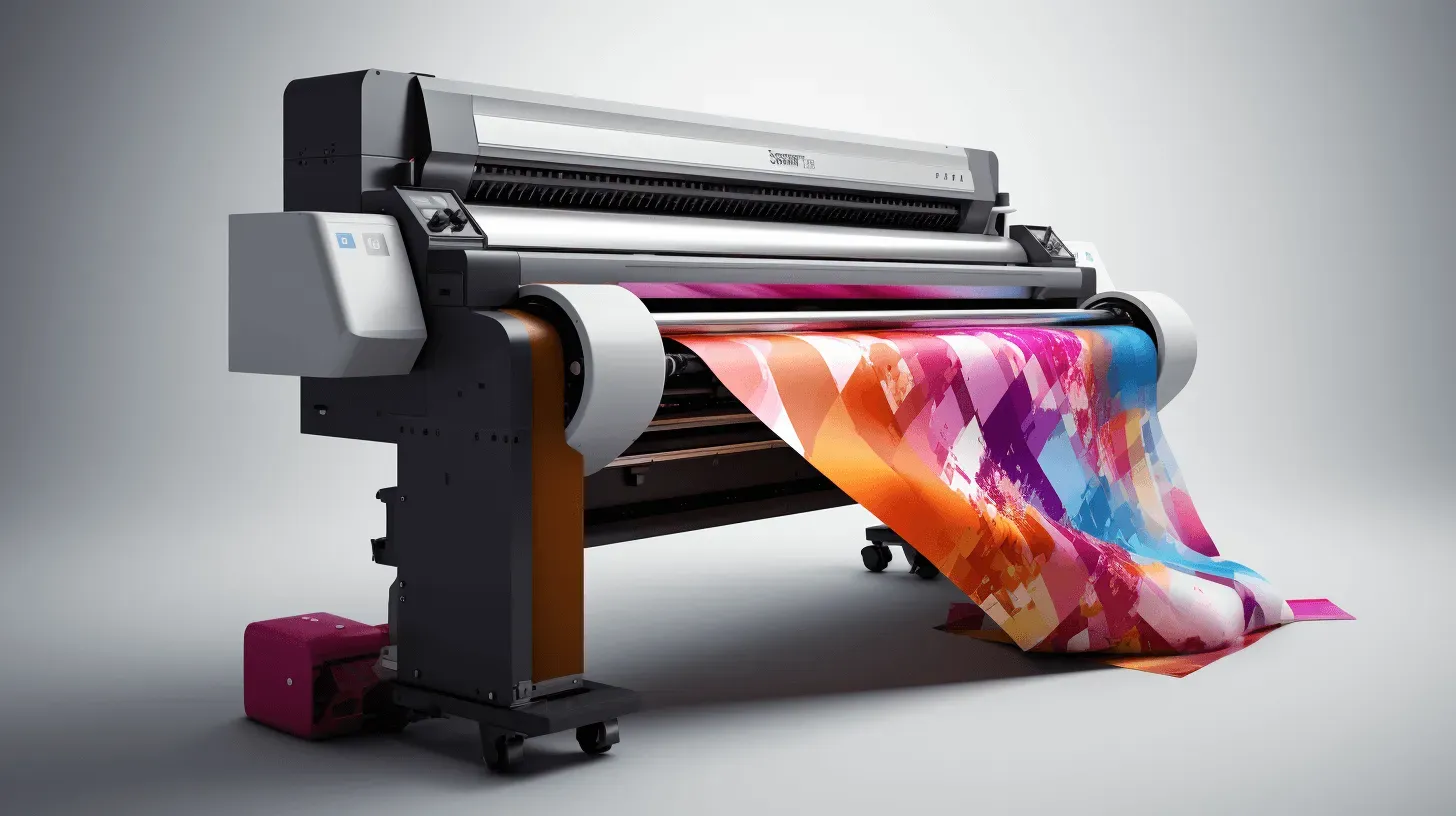DTF printing quality is the cornerstone of creating stunning and durable designs in the garment printing industry. As this innovative printing technique gains popularity, understanding how to improve DTF print quality becomes essential for businesses aiming to stand out. In this guide, we will cover effective DTF printing tips, which include selecting the best DTF inks, optimizing heat press settings for DTF, and refining the DTF printing process itself. Elevating your print quality not only attracts more customers but also ensures their satisfaction with vibrant and long-lasting prints. Dive into the strategies that will revolutionize your approach and maximize your DTF printing quality!
Direct to Film (DTF) printing offers a revolutionary way to transfer intricate designs onto various fabrics while ensuring remarkable vibrancy and clarity. This modern printing method simplifies the process of adding graphics to apparel and accessories, making it increasingly popular among print shops. To enhance your fabric printing quality, it’s crucial to adopt proper techniques, such as utilizing high-quality materials and optimizing machine settings. With a focus on achieving superior outcomes, our detailed guide will help you grasp the nuances of the DTF process and provide insights for achieving the best possible results. Join us as we explore the best practices to elevate your prints in this competitive market.
Choosing the Best DTF Inks for Vibrant Results
When it comes to maximizing the vibrancy and quality of your DTF prints, selecting the right inks is crucial. High-quality DTF inks are designed specifically for this printing method, ensuring they adhere well to the transfer film and fabric surfaces. These inks provide excellent color saturation and durability, resulting in prints that not only look great but last longer on garments. Some of the best DTF inks on the market also incorporate advanced formulations that minimize clogging, which is a common issue faced by DTF printers.
In addition to choosing specialized inks, it’s essential to source them from reputable suppliers who focus on DTF technology. The performance of your inks can dramatically affect your overall print quality, so investing in well-reviewed, high-end products can be beneficial. Regularly monitoring the expiration dates and storage conditions of these inks will also help maintain their integrity, thus ensuring consistent color output and quality in every print run.
Essential Tips to Improve DTF Print Quality
Improving your DTF print quality requires attention to detail at various stages of the printing process. One fundamental tip is to calibrate your printer settings precisely according to the specifications of the transfer film and inks you are using. Ensuring your printer operates at optimal resolution and ink saturation levels can make a significant difference in the final result. Many printers have specific modes tailored for DTF printing; utilizing these settings can enhance clarity and richness in colors.
Another crucial aspect to consider is the quality of the surface you’re printing on. Preparing the garment properly—by cleaning and preheating the fabric—ensures that the transfer adheres better and provides a more vibrant result. Not only does this preparation maximize print quality, but it also contributes to the durability of the finished design, helping to resist fading and wear over time.
The Impact of Heat Press Settings on DTF Transfers
The heat press settings are a vital component in the DTF printing process, directly influencing the quality of the final print. Typically, a heat setting of around 320°F (160°C) for 15-20 seconds is recommended, but it is essential to adjust this based on the specific fabric and transfer materials you are using. Too high a temperature may scorch the fabric, while too low can lead to incomplete adherence, resulting in peeling or flaking prints. Conducting tests with varying heat settings can help find the ideal conditions for your unique projects.
Moreover, the pressure settings on your heat press also play a significant role in ensuring a successful transfer. Applying the right amount of pressure helps the transfer film to make proper contact with the fabric, which is essential for achieving vibrant and high-quality results. A careful balance of temperature, time, and pressure will yield the best possible outcomes, consistently elevating the quality of your DTF prints.
Preparing the Print Surface for Optimal Results
Proper preparation of the print surface is a key step that many DTF print businesses may overlook, yet it significantly impacts the final print quality. Always ensure that the fabric is clean, dry, and free from any debris or chemicals that could affect adhesion. Implementing a pre-treatment process, such as a quick heat press before printing, can enhance the effectiveness of the transfer by ensuring that the fabric fibers are more receptive to the inks. This preheating process optimizes the print surface, leading to stronger adhesion and longer-lasting results.
Additionally, consider experimenting with different substrates during the preparation phase. Different fabrics, whether cotton, polyester, or blends, can respond uniquely to the DTF process. By testing various materials, you can determine the best fits for your designs, ultimately enhancing the overall print quality. Understanding how different surfaces interact with DTF inks will allow you to maximize the impact of your prints and adapt to various customer needs.
Conducting Test Prints for Quality Assurance
One effective method for ensuring high-quality DTF prints is to conduct thorough test prints before moving onto larger production runs. This practice allows print professionals to evaluate the accuracy of colors, detail sharpness, and overall print quality in real-world conditions. Test prints provide an opportunity to fine-tune settings such as resolution and ink saturation, helping identify the ideal configuration for each job. Consistent testing can save resources and time by minimizing the likelihood of errors in larger batches.
Furthermore, documenting test results can create a reference for future projects, allowing you to replicate successful techniques and settings efficiently. Over time, this practice not only improves quality assurance but also builds a repository of knowledge specific to your printing equipment and materials, paving the way for continuous improvement and innovation in your DTF printing endeavors.
Engaging with the DTF Printing Community
Being part of the DTF printing community can provide you with invaluable insights, support, and resources to enhance your business’s success. Online forums, social media groups, and industry conferences offer platforms to share experiences, troubleshoot issues, and gather tips from seasoned professionals. Engaging with others who encounter similar challenges can lead to discovering innovative solutions that improve print quality and operational efficiency.
Additionally, contributing your knowledge and experiences to these communities can foster mutual growth and create valuable connections. Sharing your tips on optimizing DTF print quality, whether related to materials, settings, or unique techniques, can establish you as a resource within the community. This sense of collaboration can lead to collective advancement in DTF printing, further pushing the boundaries of what is possible in this exciting industry.
Frequently Asked Questions
What are the best DTF inks to improve DTF printing quality?
To enhance DTF printing quality, it’s crucial to use high-quality, specialized DTF inks designed for vibrant colors and durability. Brands that focus on DTF technology typically offer inks that reduce nozzle clogging and yield superior print results compared to general-purpose inks, ensuring that your designs stand out on fabric.
How do heat press settings influence DTF printing quality?
Heat press settings play a vital role in DTF printing quality. Optimal settings usually involve a temperature of about 320°F (160°C) for 15-20 seconds. Adjusting temperature and pressure based on your specific transfer film and substrate is essential, as improper settings can lead to poor adhesion and lower print durability.
What tips can help to improve DTF print quality during the printing process?
To improve DTF print quality, consider selecting high-quality transfer film, optimizing printer settings for resolution and saturation, and ensuring that the print surface is clean. Performing test prints can also aid in fine-tuning these elements before full production.
How important is regular maintenance for DTF printing quality?
Regular maintenance is critical for maintaining high DTF printing quality. Keeping your printer clean, checking for nozzle clogs, and scheduling routine maintenance ensures that your printer operates at optimal performance, providing consistent output quality during production.
What surface preparation techniques improve DTF printing quality?
Proper surface preparation significantly impacts DTF printing quality. Always start with a clean substrate, and consider performing a pre-heat treatment with your heat press to promote better adhesion of the transfer. These practices help in achieving stronger, longer-lasting prints.
How can experimenting with colors enhance DTF printing quality?
Experimenting with colors can lead to unique and vibrant designs that enhance DTF printing quality. Mixing different ink combinations or using various shades creatively can result in eye-catching prints, showcasing your artistic style and potentially setting your work apart in the market.
| Aspect | Description |
|---|---|
| Understanding DTF Printing | A method of transferring designs onto fabrics using specialized inks and transfer film, allowing for high-resolution, vibrant images. |
| Choosing the Right Film | Select high-quality PET film designed for DTF to ensure better adhesion and reduce issues like cracking or peeling. |
| Optimizing Printer Settings | Adjust printer resolution and ink saturation to balance quality and production speed. |
| Using Quality Inks | Use specialized inks for DTF printing to prevent clogs and enhance color vibrancy. |
| Preparing the Print Surface | Ensure the substrate is clean and perform pre-heat treatment for better adhesion. |
| Heat Press Settings | Use correct temperature and pressure settings, typically around 320°F for 15-20 seconds, to achieve proper transfers. |
| Test Prints | Conduct test prints to evaluate quality and make adjustments before full production runs. |
| Regular Maintenance | Perform routine cleaning and maintenance to ensure consistent output quality from your printer. |
| Post-Processing | Heat press the design again after printing for better durability and longevity. |
| Experimenting with Colors | Mix and experiment with colors to create unique designs and enhance visual appeal. |
| Community Engagement | Engage with DTF printing communities for insights, trends, and tips to improve practices. |
Summary
DTF printing quality is crucial for businesses looking to produce vibrant, durable designs that satisfy customers. By understanding key aspects such as the materials, printer settings, and maintenance routines, companies can enhance their output significantly. This guide emphasizes the importance of selecting the right transfer film, optimizing printer settings, using specialized inks, and engaging in regular maintenance—all contributing to maximizing DTF printing quality. As the industry evolves, staying updated with community insights and experimenting with design will further set your prints apart in a competitive market.



